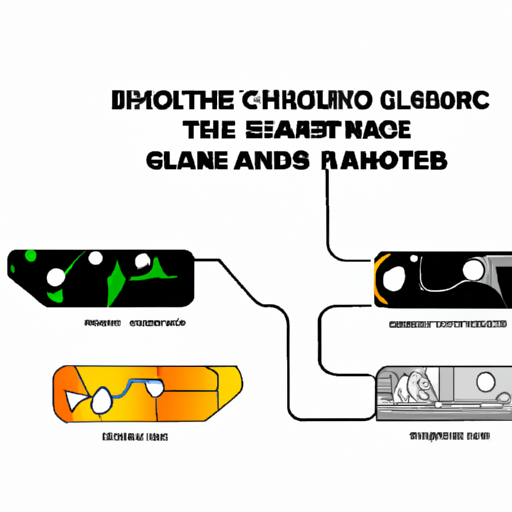In the world of energy storage, batteries play a crucial role in powering our everyday lives. From smartphones to electric vehicles, batteries are essential for storing and delivering energy when needed. Two popular types of batteries that are often compared are graphene batteries and lead-acid batteries. Both have their own set of advantages and disadvantages, but which one is the best?

One of the main advantages of graphene batteries is their high energy density. This means that they can store more energy in a smaller space, making them ideal for use in portable devices like smartphones and laptops. Graphene batteries also have a longer lifespan than traditional lithium-ion batteries, with some estimates suggesting they could last up to 10 times longer.
Another advantage of graphene batteries is their fast charging capabilities. Because graphene is such a good conductor of electricity, these batteries can be charged much more quickly than traditional batteries. This is a major selling point for consumers who are tired of waiting hours for their devices to charge.
On the other hand, lead-acid batteries have been around for much longer and are a more established technology. These batteries are commonly used in cars, boats, and other vehicles that require a reliable source of power. Lead-acid batteries are known for their durability and low cost, making them a popular choice for many applications.
One of the main advantages of lead-acid batteries is their low cost. These batteries are relatively inexpensive to produce, making them a cost-effective option for many consumers. Lead-acid batteries are also easy to recycle, which is important for reducing the environmental impact of battery disposal.
However, lead-acid batteries also have some significant drawbacks. They are heavy and bulky, which can be a disadvantage for portable devices or electric vehicles. Lead-acid batteries also have a lower energy density than graphene batteries, meaning they can store less energy in the same amount of space.
In conclusion, both graphene batteries and lead-acid batteries have their own set of advantages and disadvantages. Graphene batteries offer high energy density, fast charging capabilities, and a long lifespan, making them ideal for portable devices and electric vehicles. Lead-acid batteries, on the other hand, are cost-effective, durable, and easy to recycle, making them a popular choice for many applications.
Ultimately, the best type of battery will depend on the specific needs and requirements of the user. For consumers looking for high performance and long-lasting batteries, graphene batteries may be the best option. However, for those looking for a cost-effective and reliable solution, lead-acid batteries may be the better choice. As technology continues to advance, it will be interesting to see how these two types of batteries continue to evolve and compete in the market.
In the world of energy storage, batteries play a crucial role in powering our everyday lives. From smartphones to electric vehicles, batteries are essential for storing and delivering energy when needed. Two popular types of batteries that are often compared are graphene batteries and lead-acid batteries. Both have their own set of advantages and disadvantages, but which one is the best?

One of the main advantages of graphene batteries is their high energy density. This means that they can store more energy in a smaller space, making them ideal for use in portable devices like smartphones and laptops. Graphene batteries also have a longer lifespan than traditional lithium-ion batteries, with some estimates suggesting they could last up to 10 times longer.
Another advantage of graphene batteries is their fast charging capabilities. Because graphene is such a good conductor of electricity, these batteries can be charged much more quickly than traditional batteries. This is a major selling point for consumers who are tired of waiting hours for their devices to charge.
On the other hand, lead-acid batteries have been around for much longer and are a more established technology. These batteries are commonly used in cars, boats, and other vehicles that require a reliable source of power. Lead-acid batteries are known for their durability and low cost, making them a popular choice for many applications.
One of the main advantages of lead-acid batteries is their low cost. These batteries are relatively inexpensive to produce, making them a cost-effective option for many consumers. Lead-acid batteries are also easy to recycle, which is important for reducing the environmental impact of battery disposal.
However, lead-acid batteries also have some significant drawbacks. They are heavy and bulky, which can be a disadvantage for portable devices or electric vehicles. Lead-acid batteries also have a lower energy density than graphene batteries, meaning they can store less energy in the same amount of space.
In conclusion, both graphene batteries and lead-acid batteries have their own set of advantages and disadvantages. Graphene batteries offer high energy density, fast charging capabilities, and a long lifespan, making them ideal for portable devices and electric vehicles. Lead-acid batteries, on the other hand, are cost-effective, durable, and easy to recycle, making them a popular choice for many applications.
Ultimately, the best type of battery will depend on the specific needs and requirements of the user. For consumers looking for high performance and long-lasting batteries, graphene batteries may be the best option. However, for those looking for a cost-effective and reliable solution, lead-acid batteries may be the better choice. As technology continues to advance, it will be interesting to see how these two types of batteries continue to evolve and compete in the market.